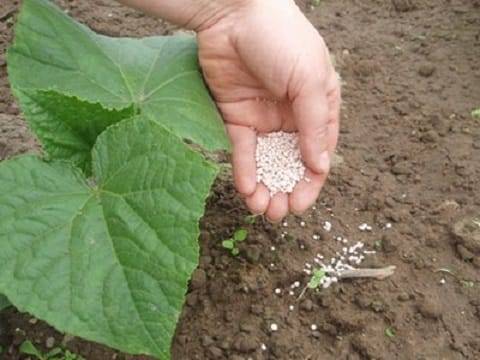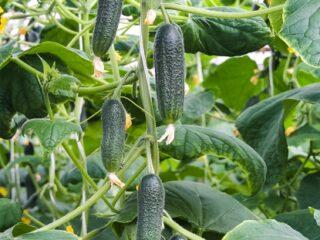Content
With agricultural cultivation technology cucumbers in a greenhouse Today many are familiar with it, because many people are engaged in cultivating this crop in greenhouse conditions. The main reason why this method is so popular is that the greenhouse allows you to increase the fruiting period of this crop. Therefore, a summer resident can provide himself with fresh cucumbers not only in summer, but also in autumn. And if you choose the right varieties, this activity can become an additional source of income.
Preparing the soil for growing cucumbers
What the cucumber harvest will be like depends largely on many factors and the soil. If you have already acquired a greenhouse, then you can prepare the soil. There are many options here, but keep in mind that in the end you should end up with fertile land. In order not to fuss in the spring, it is advisable to start preparing the soil in the fall, after harvesting the next harvest. To grow cucumbers, you need to sow green manure before winter: wheat or rye. After waiting until the winter crops become strong, they are dug up and an additional 4 kg are added to the soil. superphosphate and 3 kg of wood ash per 10 m².At this point, autumn soil preparation is considered complete.
It is also useful to disinfect the soil before planting: for this, prepare a mixture of potassium permanganate and lime in accordance with the following proportions: take 6 g of manganese for 15 liters of water and 20 g of lime for 6 liters of water.
The most labor-intensive part of soil preparation is planned for the spring: it is necessary to dig a trench up to 25 cm deep at the selected location. Place compost or humus in a 15 cm layer and a little greenhouse soil at the bottom.
Rules for planting cucumber seeds for seedlings
An equally important stage in growing cucumbers in a greenhouse is sowing the seeds. Peat pots, which must first be filled with nutritious soil, are best suited for this. You can also use peat tablets or plastic cups available to everyone instead. If you have time, you can make paper cups. In general, the gardener should have the last word.
But if you decide to use plastic containers for growing seedlings, you need to make drainage holes in them before filling them with soil. Sow two seeds in each cup to a depth of no more than 1.5 cm.
It is also necessary to resolve the issue of nutritious soil for sowing cucumber seeds. It can be purchased at specialized gardening stores or prepared yourself. If you choose the latter, you can use one of the following soil mixture options, which you can prepare at home:
- Take equal amounts of peat, sawdust and turf soil. Add 1 cup of wood ash to the bucket of mixture.
- A mixture for sowing seeds can be prepared from peat and humus, taken in equal proportions. Place 1 cup of wood ash on a bucket of mixture.
- You can prepare a mixture of 2 parts peat, the same amount of humus and 1 part small sawdust. Additionally, you need to add 3 tbsp to the bucket of mixture. l. wood ash and 1 tbsp. l. nitrophoska.
To increase the fertility of planting soil, a solution of sodium humate is required. To prepare it you need to take 1 tbsp. l. drug and dilute in a bucket of water. It is necessary to heat the prepared solution to a temperature of +50 °C and pour it over the soil mixture into which the seeds will be sown. Often, after watering, the ground begins to sag. In this case, you will have to add more soil to fill the full volume of the cups. When the seeds are in the planting container, they need to be covered with plastic film, which will help create an optimal microclimate for germination.
To speed up seed germination, it is necessary to maintain the temperature at +22...+28 °C. With the appearance of cucumber sprouts, you need to lower the temperature: during the day it should not exceed +15...+16 °C, and at night - +12...+14 °C. The process of growing seedlings takes little time and lasts a maximum of 25 days. It is very important that the fluctuations between day and night temperatures are significant - this will help speed up the formation of the plant root system.
How to grow cucumbers in greenhouse conditions
Having finished sowing the seeds, you need to wait for them to germinate. After this, the covering material is removed because it is no longer needed. From this moment the temperature is reduced to +20 °C. This will prevent the seedlings from being pulled out.
Another 7 days after sowing, diving begins. Simultaneously with this operation, it is necessary to carry out thinning to remove weak entries. Until it's time to transplant cucumber seedlings into the greenhouse, water it several times and add soil to the pots if necessary. According to the rules of agricultural technology for growing cucumbers, fertilizing must be applied during the formation of seedlings, regardless of the level of fertility of the soil used for sowing seeds.
Until the weather is favorable for transplanting seedlings into a greenhouse, the plants need to be fed several times. Fertilizers are applied for the first time when the first true leaf appears. Experts recommend using organic or mineral fertilizers in liquid form. For better absorption by plants, fertilizers are combined with watering, and it is advisable to carry out this procedure in the morning. After 2-3 weeks, the second feeding begins. It is usually timed to formation The seedlings have a second true leaf. The third time, fertilizers are applied immediately before transplanting the seedlings into the greenhouse, a few days before the planned date.
How to fertilize seedlings
Growing a good harvest in greenhouses without fertilizing is very difficult, and sometimes almost impossible. Therefore, they need to be carried out not only at the stage of growing in a greenhouse, but also during the formation of seedlings. It was already mentioned above that fertilizers are applied to seedlings 3 times. For the first time, use a mixture of mineral and organic fertilizers:
- Superphosphate (20 g).
- Manure solution. To prepare it, you need to dilute 1 bucket of healthy liquid in the same amount of water.
Bird droppings can be used instead of slurry. True, in this case you need to change the proportions, 1:10. However, you can save time and purchase ready-made fertilizer at the gardener’s store, for example, potassium humate, sodium humate or the like.When the time comes for the next fertilizing, the dose of fertilizer must be increased. The second time, the seedlings can be fed with nitrophoska: it must be added diluted in a bucket of water during watering. During the first and second fertilizing, it is necessary to adhere to the following fertilizer consumption schedule: 2 liters per 1 m² of planting.
When it’s time to fertilize for the third time, you can prepare the following fertilizer:
- superphosphate (40 g);
- urea (15 g);
- potassium salt (10 g);
- bucket of water (10 l).
Fertilizer prepared according to the above recipe is applied according to the following scheme: 5 liters per 1 m² of planting. Each time, fertilizing must be completed by watering with regular clean water. You need to do this very carefully and make sure that fertilizers do not get on the leaves of the seedlings. But if this does happen, then immediately rinse the solution with warm water.
Planting cucumber seedlings in a greenhouse
Growing cucumber seedlings for a greenhouse takes no more than 25 days; you can tell this by the formation of 3-5 true leaves on the plants. Plant the cucumber in rows, which should be located at a distance of 0.5 m from each other. The tapes are placed in increments of about 80 cm, the landing step should be 25 cm.
Before placing the plant in the hole, you need to put a handful of organic matter or mineral fertilizer on the bottom. After this, you should moisten the hole and transfer the peat pot into it. It is covered with soil on top and compacted. If you used other containers to grow seedlings, for example, plastic cups, then you need to carefully remove the plant along with the soil and transfer it to the hole. The replanting is completed by thoroughly watering and mulching the top layer of soil.
Cucumber growing technology
After transplanting the seedlings, the summer resident needs to make every effort to create favorable conditions so that the plants can take root and begin to grow. It must be taken into account that at each stage of development it is necessary to maintain a certain temperature.
Keep in mind that this crop does not tolerate sudden temperature fluctuations throughout the day.
In the first days after transplantation, the temperature must be maintained at +20...+22 °C. When the seedlings take root, the temperature can be lowered to +19 °C. If you initially lower the temperature, this will seriously slow down the growth of seedlings. If, on the contrary, you maintain a high temperature all the time, then the plants will spend most of their energy on the formation of foliage, which will negatively affect the harvest.
















